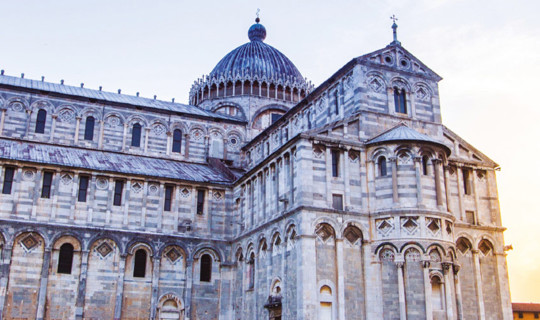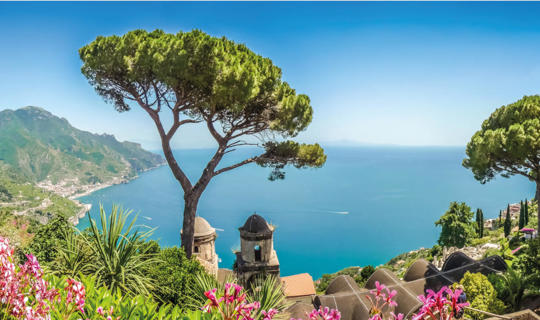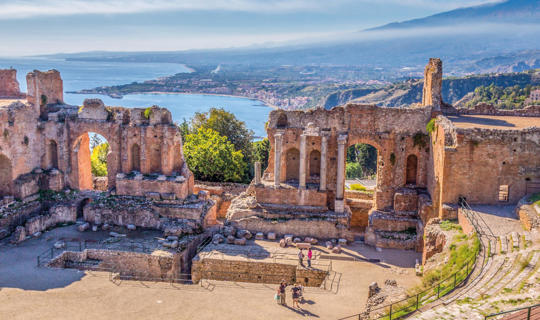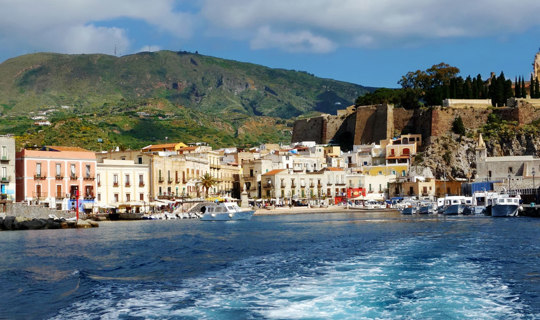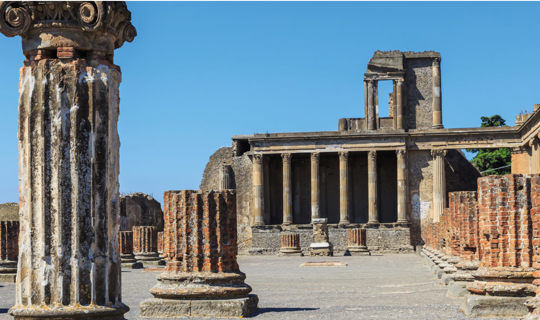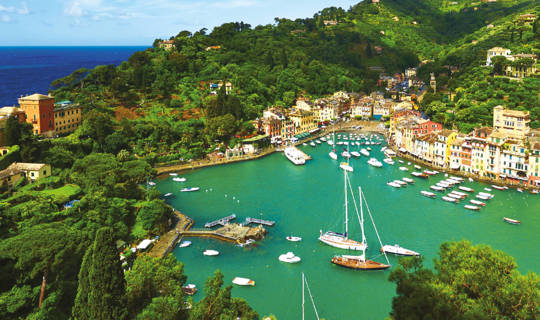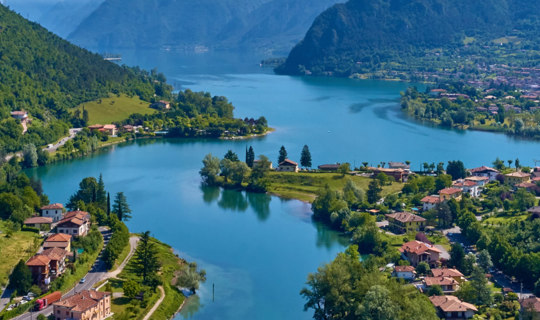
Secret Lakes of Italy
Discover the scenic beauty of northern Italy’s secret lakes, where tranquil waters, unspoiled nature and delicious cuisine await.
- Return flights
- 7 nights in 3 and 4-star hotels
- 11 meals: 7 breakfasts, 1 lunch, 3 dinners
Mon-Fri: 0900 -1800 Sat: 0900 - 1700 Sun & BH: Closed
Mon-Fri: 0900 -1800 Sat: 0900 - 1700 Sun & BH: Closed
Holiday Search
Italy is renowned for its rich heritage, deliciously varied regional cuisine, and incredible art and architecture. From compelling historical landmarks to fascinating local traditions, these 30 facts about Italy will amaze even the most passionate enthusiasts of this nation and its dedication to la dolce vita (the sweet life). Experience the sweet taste of Italy yourself on one of our award-winning Italian escorted tours.
Italy has a long Mediterranean coastline, many islands and its natural attractions include stunning sea vistas, serene cypress-dotted countryside and three mountain ranges. From ancient hillside villages to the Eternal City of Rome, or iconic cities of Florence and Venice, Italy is a country of delightful contrasts and there are countless intriguing facts about this endlessly appealing nation.
Florence can be recognised for at least one impressive architectural accomplishment: it was the first city in Europe to have fully paved streets. Visitors will also be captivated by its many fine galleries, including the Uffizi and its magnificent collection of paintings from the Middle Ages.
Walk these beautifully cobbled streets for yourself on our Treasures of Tuscany & Florence tour.
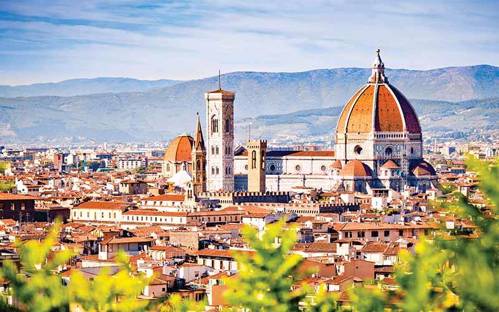
Italy has been a centre for talented artists and influential writers. One particular period that stands out is the Renaissance, which helped shape remarkable masters like Leonardo Da Vinci and Michelangelo. Stand in the silenced Sistine chapel, and look skywards to admire the intricate details of perhaps one of the world's most famous pieces of art.
This beloved story had a humble beginning within the pages of a simple Italian newspaper. In July 1881, readers of Giornale per i Bambini (or children's newspaper) were delighted to come across the charming first part of The Story of a Puppet by Carlo Collodi.
Italy's rich history encompasses the extraordinary growth of the Roman Empire. At its peak, this empire stretched across three continents and included approximately 2.3 million square miles.
Italy isn't the only country where you can explore ancient ruins. Jeresh is home to some of the best preserved roman ruins outside of Italy and we visit them on the Jordan's Ancient Wonders tour.
Venice, also known as "The Floating City", is famous for its intricate network of canals often lined with palazzi (grand houses). Gondolas and boats are the primary modes of transportation in this ancient city built on a lagoon. Wind your way across this iconic city which includes 471 bridges connecting one side of a canal to another. The oldest and most famous bridge is the Rialto bridge and until 1854 was the only place you could cross the Grand Canal on foot.
Explore St Mark's Square and the Rialto Bridge as you kick start your Grand Tour of Italy in style.
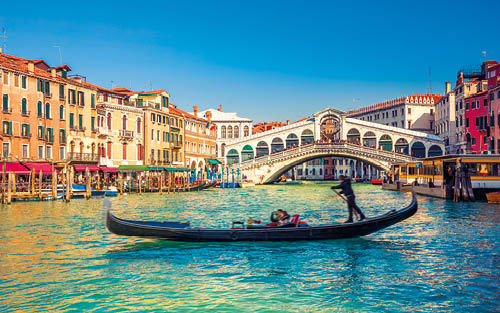
The drinking water in Italy is not only safe but also respected for its exceptional quality. In fact, it often rivals bottled water and is subject to rigorous quality control measures.
Cinecittà Studios in Rome is Europe's largest film studio. It has provided sets for many iconic movies throughout the years, including beloved classics like , Roman Holiday (1953), Ben-Hur (1959), The Godfather Part III (1990) and Gangs of New York (2002).
Italy is responsible for approximately 20% of global olive oil production. Each region within Italy boasts its own blend of olive oil, each distinctively representing the diverse soil and climate conditions found throughout the nation. In northern Italy, the flavours are quite delicate, but as you head south, the flavours become stronger and can become quite peppery.
San Gimignano in Tuscany is renowned for its unique skyline adorned with mediaeval buildings. At one point, the city boasted an astonishing 72 towers, which were symbols of wealth and success for affluent families who engaged in friendly rivalry to construct the tallest tower.
Pick your favourite as you wander the streets on an optional tour of San Gimignano.
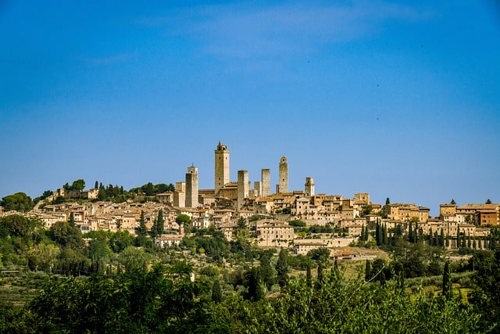
Italy is respected worldwide as a leading fashion hub, with influential cities like Milan at the forefront of the industry. This stylish country gave us prestigious brands such as Gucci, Prada, and Versace.
It is a popular tradition to throw a coin over your shoulder into this famous fountain in Rome. According to this tradition, throwing a single coin guarantees your future return. However, throwing two or three coins could guarantee finding love or even marriage. So many visitors take part in this ritual that the fountain has to be emptied twice a week!
Religion plays a prominent role in Italian culture, with the majestic Vatican City serving as the spiritual and administrative centre of the Roman Catholic Church. The majority of Italians identify as Catholics, and when visiting Italy, you will encounter numerous chapels, and churches. From the sublime artwork of the Sistine chapel to Florence's iconic Duomo di Milano or viewing the Volto Santo relic, a sacred wooden sculpture of Christ thought to date back to 742 AD, in Romanesque St Martin Cathedral, no two are the same.
Italy is home to not only one, but two independent countries: Vatican City and San Marino. These two remarkable entities have their own fascinating histories and unique cultural traditions. It's hard to miss the colourful uniforms of the Vatican's Swiss Guards, sworn protectors of the Holy See, as you stand in the Piazza San Pietro (St Peter's Square) and take in the beautiful architecture of St Peter's Basilica.
During the Second World War, when Italy was under Nazi occupation, the Leaning Tower of Pisa became an observation outpost, showing how well-known landmarks can also perform a range of functions in times of war or crisis.
Dried pasta was brought to Italy during the medieval period by Arab travellers. This cultural fusion demonstrates the significant impact of cultural exchange and development. Eventually, pasta became famous worldwide, and there is a museum dedicated to it in Rome.
Before Rome became the centre of a powerful empire, Italy was the birthplace of the ancient Etruscan and Samnite civilisations. These societies had enormous cultural influence and helped shape what would later become part of Roman heritage.
Bologna is renowned for its iconic Le Due Torri, or Two Towers: Asinelli and Garisenda. Interestingly, the tower of Garisenda leans even more than the Leaning Tower of Pisa. Leaning 4 degrees compared to Pisa's 3.9 degrees. Restoration work is hoped to begin on the tower soon to stabilise it's current slant for generations to come.
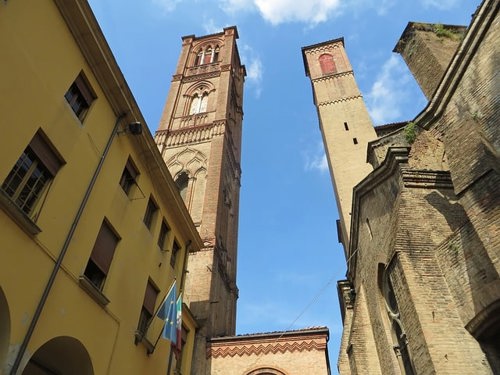
The University of Bologna holds the title as the oldest university still in operation today. Established in 1088, this esteemed institution has maintained a legacy of academic and scientific excellence for centuries. With buildings dotted throughout the city of Bologna you are bound to wander past some of the stunning architectural masterpieces that make up this university. Often open to the public, the buildings make for a unique view of Italy.
The enchanting waterways of Venice also expose a less romantic truth – the city is sinking. With sea levels rising and the natural subsidence of land, concerns have been raised about the future of this UNESCO heritage site.
One of the most well known facts of Italy is it's rather unique shape. Commonly known as "The Boot of Europe" because of its distinctive outline, resembling high-heeled footwear. This geographical characteristic makes Italy easily identifiable on maps.
Italian culture is rich with superstitions, such as avoiding encounters with black cats to touching iron for good luck. It’s even considered unlucky to place a hat on a bed and some hotels don't have a 17th floor as the number is considered unlucky
As a result of its location between the Eurasian and African tectonic plates, Italy encounters frequent seismic activity. Some parts of the country are susceptible to earth movement.
Although Italian is the official language of Italy, the country is home to a rich variety of local languages and dialects. In northern Italy, German is spoken due to historical ties and close proximity to Austria. Different regions in Italy have their own unique languages like Calabrian (Calabrese), Venetian, Sicilian, and Neapolitan.
The origin for the name of Italy has often been subject to debate. One school of thought believes the name Italy could have been derived from the term italus, which means calf land. This could be connected to early agricultural practices, myths in the region or the fact that Italians do like milk and cheese.
Benito Mussolini, a prominent figure in European totalitarianism, held political power in Italy from 1922 to 1943. He founded and led the National Fascist Party. Il Duce governed with a firm hand until he was executed by soldiers.
Despite common misconception, tomatoes did not originate in Italy. They were actually brought to Italy from Peru in the 16th century and have since become a fundamental ingredient in Italian cuisine.
When it comes to notable edible contributions from Italy, the invention of pizza undoubtedly holds a significant place. Naples, often known as the birthplace of pizza, introduced this culinary delight to the world in the 1800s.
Although there are believed to be some references to an ancient Greek flatbread that is thought to be a potential precursor for Pizza. Whichever origin story you side with, we can all agree that Italy has certainly perfected the pizza.
Try a slice for yourself in the shadow of Mount Vesuvius on our tour of Pompeii, Paestum and Herculaneum.
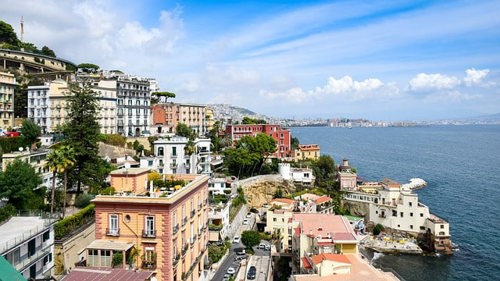
Football is a national passion in Italy. The country has a strong football tradition and has won the FIFA World Cup four times, putting them joint second place for the most World Cup wins.
Italy is well known for its automotive industry. Brands like Fiat, Ferrari, Lamborghini, and Maserati produce some of the world's most iconic and sought-after high-performance cars.
It is widely recognised that Italians have a profound passion for pasta, and an intriguing statistic supports this claim: on average, each person in Italy consumes nearly 60 pounds (or 27 kg) of pasta every year. Pasta is also eaten as the primo piatto, the first course (not to be viewed as an appetiser) followed by everything eles.
Discover the enduring appeal of Italy for yourself with Travelsphere's range of escorted tours, all designed to give you the best in terms of experiences, food, accommodation, and excursions. Our 15 Day Grand Tour of Italy is an excellent choice, allowing you to immerse yourself in the multifaceted culture of this remarkable country.
In destinations such as Pompeii, prepare to delve into the Italy's illustrious past, where ancient Roman ruins breathe life into its history. Each day on one of our guided tours takes you on a captivating journey - walk in the footsteps of historical legends and witness the magnificence of Italy through their eyes. In the company of like-minded travellers, who share your passion to see the world, you’ll create many incredible memories.
For those travellers looking to experience the unparalleled beauty of the Italian Riviera, then look no further than our IItalian Riviera & Portofino tour. You’ll navigate through picturesque landscapes and colourful villages giving you a taste of authentic Italy all while enjoying one unforgettable moment after another.
Discover the scenic beauty of northern Italy’s secret lakes, where tranquil waters, unspoiled nature and delicious cuisine await.
Explore Italy from top to toe on an incredible journey that takes in the iconic cities of Venice, Florence and Rome and discovers the wonders of Pompeii, Sicily and more.
Pastel-coloured villages perched on dramatic cliffs overlooking the azure sea - it's this picture-postcard scenery that makes the Amalfi Coast so special.
These two spectacular regions in Italy’s heel abound with incredible sights. Look out for traditional Trulli houses, Sassi cave dwellings and ornate Baroque buildings.
Brooding Mount Etna forms a dramatic backdrop to your discoveries as you revel in Greek and Roman history and uncover medieval treasures.
Brooding Mount Etna forms a dramatic backdrop to your discoveries as you revel in Roman history in Sicily followed by a relaxing four days on the UNESCO-protected Aeolian island of Lipari.
Uncover captivating stories, marvel at majestic ruins and wander the well-preserved streets of some of Italy’s most fascinating archaeological sites.
Explore this fascinating part of Italy with Mount Vesuvius as your backdrop. Your holiday includes four nights on the delightful island of Ischia where you can fully appreciate authentic Italian Island life.
Revel in the glamour and scenic highlights of the Italian Riviera as you explore by road, rail and boat.
